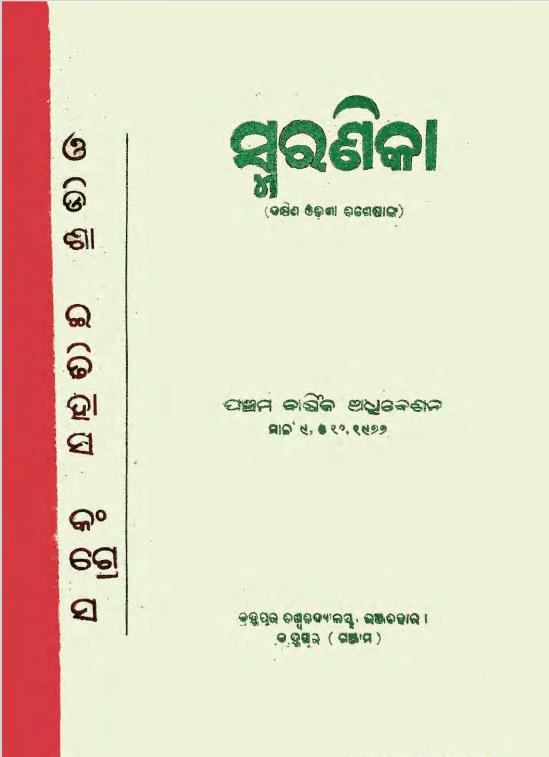Odia Other Odisha Itihasa Congress Smaranika, edited by the distinguished Sadanand Choudhury and published in 1977, serves as a significant literary and historical milestone in the narrative of Odisha, particularly highlighting the diverse cultural and historical tapestry of South Odisha, specifically the regions of Ganjam and Ghumusar. This post aims to delve into the core themes and insights that this comprehensive work encapsulates.
The year 1977 marked a crucial period of cultural reawakening for Odisha, and Choudhury’s compilation resonated with the excitement of a region steeped in rich heritage yet often overshadowed by mainstream narratives. The purpose of the Smaranika was not merely to document history but to ignite a sense of pride and recognition for the Odia identity that encompasses various sub-regions, traditions, and histories leading up to that era.
Choudhury’s editorial acumen shines through the meticulous arrangement of articles and essays, contributed by various scholars, historians, and local intellectuals. Each piece reflects the multifaceted identity of South Odisha, comprising Ganjam and Ghumusar, and documents their distinct contributions to Odia culture, politics, and society. The work underscores the importance of regional history in shaping the broader Odia identity, emphasizing that each locality has its own unique stories and contributions to the collective Odia heritage.
One of the standout themes of the Smaranika is the exploration of the socio-political landscape of Ganjam and Ghumusar. The region’s historical significance during various dynasties, including the Kalinga Empire, and later during the colonial period, is well articulated. The remnants of local governance, traditional practices, and the impact of colonial rule are examined, providing readers with a nuanced understanding of how these factors influenced contemporary Odisha.
Furthermore, the Smaranika highlights key figures from South Odisha who have made indelible marks in various fields such as literature, arts, and politics. Their contributions, often relegated to the shadows of history, are celebrated through this compilation, amplifying the voices that have shaped the region’s cultural landscape.
The book also emphasizes the necessity of preserving oral histories and indigenous traditions that are intrinsic to Ganjam and Ghumusar. It calls upon the readers to acknowledge and document their familial histories, customs, and practices before they dissipate into oblivion. This aspect of Choudhury’s work serves as a rallying cry for cultural preservation and reinforces the idea that history is not only what is recorded but also what is lived and passed down through generations.
Lastly, Odia Other Odisha Itihasa Congress Smaranika acts as a bridge, connecting the past with the present. It encourages present and future generations to take pride in their heritage, engage with their history, and recognize the intertwined fates of different Odia communities. The publication is an essential reading for anyone interested in the historical and cultural intricacies of Odisha, shedding light on the lesser-known aspects of South Odisha that contribute profoundly to the State’s diverse identity.
In sum, Sadanand Choudhury’s Odia Other Odisha Itihasa Congress Smaranika remains a cornerstone in the literary augmentation of Odia history, deepening our appreciation of the rich heritage of Ganjam, Ghumusar, and beyond. It serves as a testament to the enduring spirit of the Odia people, urging us to embrace and cherish our shared history.
Books Info
| Books name | Odisha Itihasa Congress Smaranika/ଓଡିଶା ଇତିହାସ କଂଗ୍ରେସ ସ୍ମରଣିକା |
| Author | Sadanand Choudhury |
| No Of pages | 80 |
| Publisher | NA |
| Publication | 1977 |
| Printed At | NA |
| Distributor | NA |

